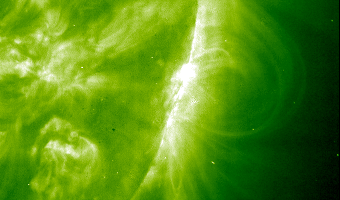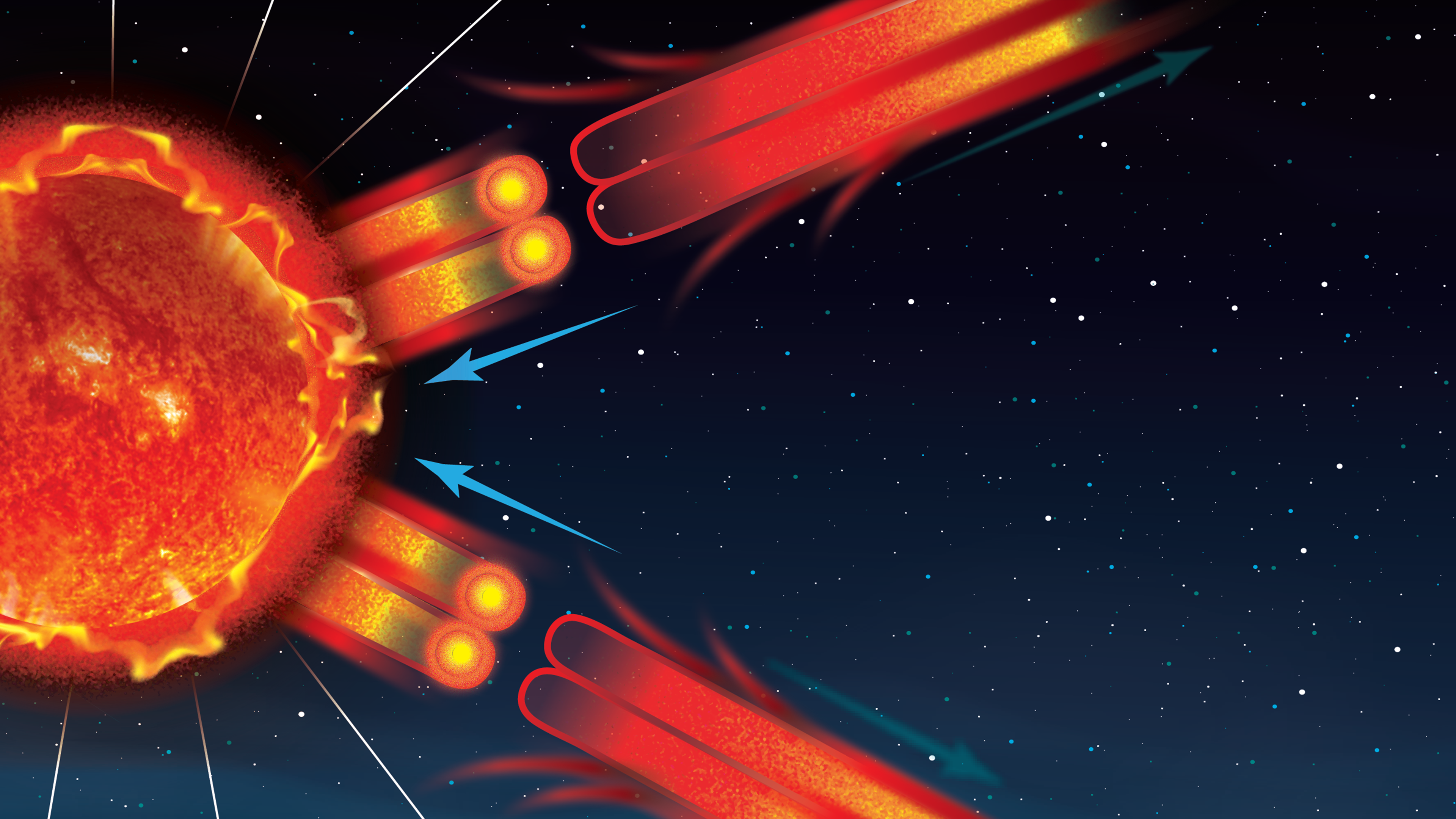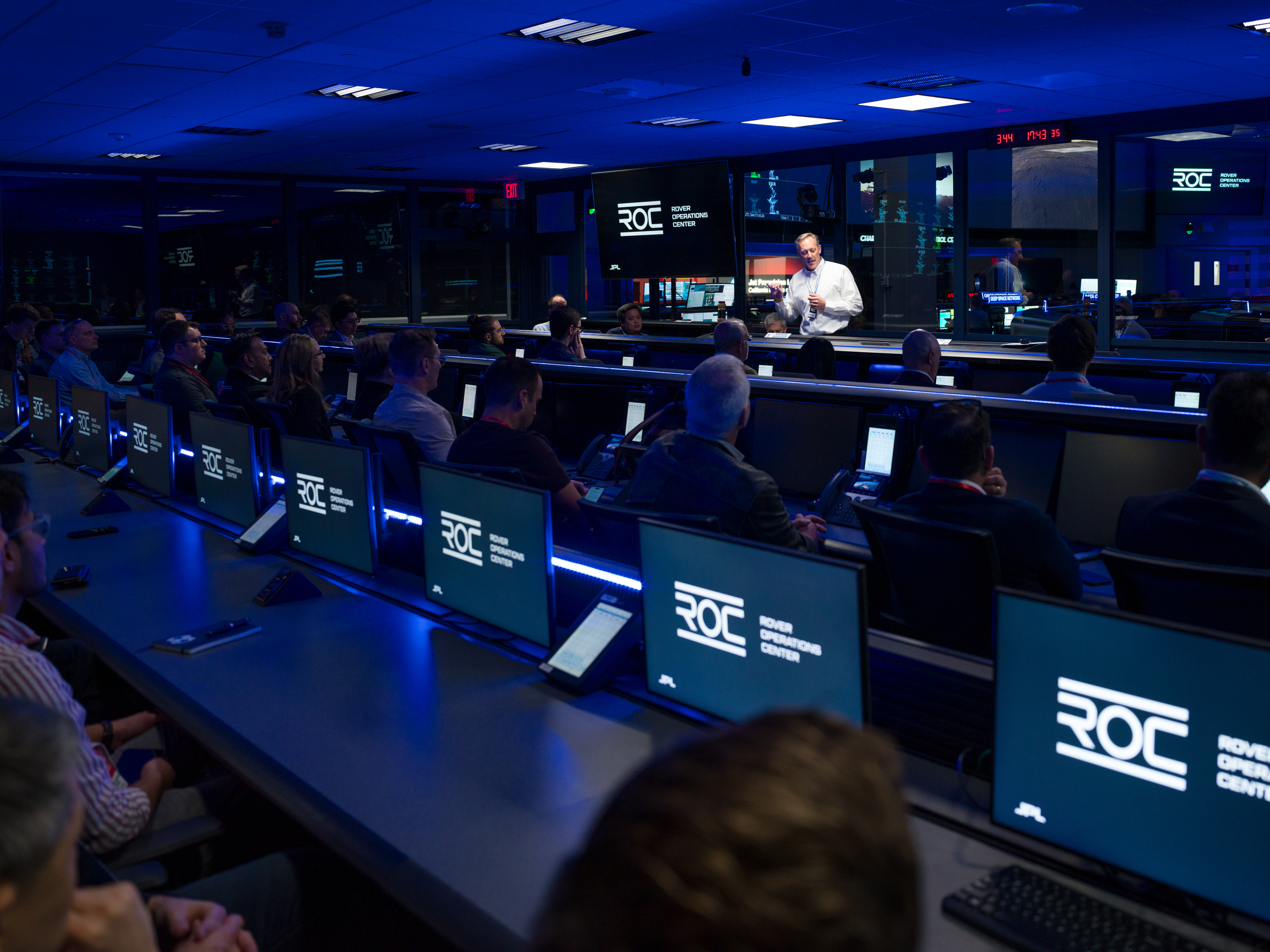Solar flares are giant explosions on the sun that send energy, light and high speed particles into space. These flares are often associated with solar magnetic storms known as coronal mass ejections (CMEs). The number of solar flares increases approximately every 11 years, and the sun is currently moving towards another solar maximum, likely in 2013. That means more flares will be coming, some small and some big enough to send their radiation all the way to Earth.
The biggest flares are known as "X-class flares" based on a classification system that divides solar flares according to their strength. The smallest ones are A-class (near background levels), followed by B, C, M and X. Similar to the Richter scale for earthquakes, each letter represents a 10-fold increase in energy output. So an X is ten times an M and 100 times a C. Within each letter class there is a finer scale from 1 to 9.
C-class and smaller flares are too weak to noticeably affect Earth. M-class flares can cause brief radio blackouts at the poles and minor radiation storms that might endanger astronauts.
And then come the X-class flares. Although X is the last letter, there are flares more than 10 times the power of an X1, so X-class flares can go higher than 9. The most powerful flare measured with modern methods was in 2003, during the last solar maximum, and it was so powerful that it overloaded the sensors measuring it. The sensors cut out at X28.
The biggest X-class flares are by far the largest explosions in the solar system and are awesome to watch. Loops tens of times the size of Earth leap up off the sun's surface when the sun's magnetic fields cross over each other and reconnect. In the biggest events, this reconnection process can produce as much energy as a billion hydrogen bombs.
If they're directed at Earth, such flares and associated CMEs can create long lasting radiation storms that can harm satellites, communications systems, and even ground-based technologies and power grids. X-class flares on December 5 and December 6, 2006, for example, triggered a CME that interfered with GPS signals being sent to ground-based receivers.
NASA and NOAA – as well as the US Air Force Weather Agency (AFWA) and others -- keep a constant watch on the sun to monitor for X-class flares and their associated magnetic storms. With advance warning many satellites and spacecraft can be protected from the worst effects.
Solar Storm and Space Weather - Frequently Asked Questions
- What is solar activity?
- What is a solar flare?
- What is a solar prominence?
- What is a coronal mass ejection or CME?
- Does ALL solar activity impact Earth? Why or why not?
- What are coronal holes?
- What is a geomagnetic storm?
- What is a sunspot?
- What is the solar cycle?
- What is solar maximum and solar minimum?
- What is space weather?
- Does the Sun cause space weather?
- Do space weather effects/solar storms affect Earth?
- What are some real-world examples of space weather impacts?
- Do scientists expect a huge solar storm in 2013?
- How long do space weather events usually last?
- How are space weather events observed?
- What are our current capabilities to predict space weather?
- How long have we known about space weather?
- Have scientists seen changes in the intensity of space weather?
- How strong is solar wind (compared to wind on Earth)?
- What are the northern and southern lights and are they related to space weather?
- Who is responsible for predicting space weather and sending alerts when there is solar activity?
- How do you forecast space weather?
- Why is forecasting space weather important?
- When do the effects of space weather show up?
- Where can I get more information?
- Sun facts
- Why didn't the world end in 2012?
- Does the solar cycle affect Earth's climate?
































